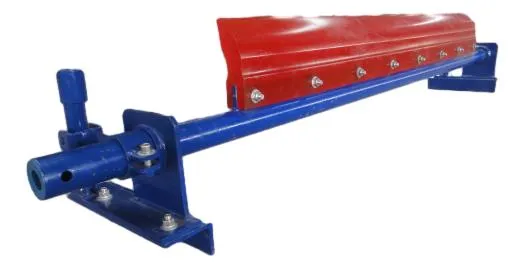 Afrikaans
Afrikaans  Albanian
Albanian  Amharic
Amharic  Arabic
Arabic  Armenian
Armenian  Azerbaijani
Azerbaijani  Basque
Basque  Belarusian
Belarusian  Bengali
Bengali  Bosnian
Bosnian  Bulgarian
Bulgarian  Catalan
Catalan  Cebuano
Cebuano  Corsican
Corsican  Croatian
Croatian  Czech
Czech  Danish
Danish  Dutch
Dutch  English
English  Esperanto
Esperanto  Estonian
Estonian  Finnish
Finnish  French
French  Frisian
Frisian  Galician
Galician  Georgian
Georgian  German
German  Greek
Greek  Gujarati
Gujarati  Haitian Creole
Haitian Creole  hausa
hausa  hawaiian
hawaiian  Hebrew
Hebrew  Hindi
Hindi  Miao
Miao  Hungarian
Hungarian  Icelandic
Icelandic  igbo
igbo  Indonesian
Indonesian  irish
irish  Italian
Italian  Japanese
Japanese  Javanese
Javanese  Kannada
Kannada  kazakh
kazakh  Khmer
Khmer  Rwandese
Rwandese  Korean
Korean  Kurdish
Kurdish  Kyrgyz
Kyrgyz  Lao
Lao  Latin
Latin  Latvian
Latvian  Lithuanian
Lithuanian  Luxembourgish
Luxembourgish  Macedonian
Macedonian  Malgashi
Malgashi  Malay
Malay  Malayalam
Malayalam  Maltese
Maltese  Maori
Maori  Marathi
Marathi  Mongolian
Mongolian  Myanmar
Myanmar  Nepali
Nepali  Norwegian
Norwegian  Norwegian
Norwegian  Occitan
Occitan  Pashto
Pashto  Persian
Persian  Polish
Polish  Portuguese
Portuguese  Punjabi
Punjabi  Romanian
Romanian  Russian
Russian  Samoan
Samoan  Scottish Gaelic
Scottish Gaelic  Serbian
Serbian  Sesotho
Sesotho  Shona
Shona  Sindhi
Sindhi  Sinhala
Sinhala  Slovak
Slovak  Slovenian
Slovenian  Somali
Somali  Spanish
Spanish  Sundanese
Sundanese  Swahili
Swahili  Swedish
Swedish  Tagalog
Tagalog  Tajik
Tajik  Tamil
Tamil  Tatar
Tatar  Telugu
Telugu  Thai
Thai  Turkish
Turkish  Turkmen
Turkmen  Ukrainian
Ukrainian  Urdu
Urdu  Uighur
Uighur  Uzbek
Uzbek  Vietnamese
Vietnamese  Welsh
Welsh  Bantu
Bantu  Yiddish
Yiddish  Yoruba
Yoruba  Zulu
Zulu Understanding the Role and Impact of Belt Drive Idlers in Mechanical Systems and Operations
Understanding Belt Drive Idlers Function and Importance
Belt drive systems play a crucial role in mechanical engineering, facilitating the transmission of power from one part of a machine to another. One of the essential components in these systems is the belt drive idler. Understanding what a belt drive idler is, its function, and its importance can provide insights into the efficiency and longevity of mechanical systems.
What is a Belt Drive Idler?
A belt drive idler is a pulley that is not connected to a driven load. Instead, it serves primarily to change the direction of the belt or to provide tension. This component is crucial for maintaining the correct tension in the belt drive system, ensuring optimal contact between the belt and the pulleys, which leads to efficient power transmission.
Idlers can take various forms, including fixed idlers and adjustable idlers. Fixed idlers maintain a constant position, while adjustable idlers can be repositioned to alter the tension in the belt. Additionally, idlers can be grooved or flat, depending on the type of belt being used.
Functions of Belt Drive Idlers
1. Tension Maintenance One of the primary roles of a belt drive idler is to maintain uniform tension in the belt. Proper tension minimizes slippage and wear, which is vital for the longevity of both the belt and the pulleys involved. If the belt is too loose, it can slip, causing a loss of power transmission. Conversely, if it's too tight, it can cause excessive wear and tear on the components.
2. Direction Change Idlers can also alter the direction of the belt path. In many mechanical systems, the arrangement of pulleys requires that the belt change direction while transmitting power. By strategically placing idlers, engineers can design layouts that maximize efficiency and accommodate spatial constraints within machinery.
3. Wear Reduction By providing a smoother surface for the belt to run against, idler pulleys can help reduce friction and prolong the life of the belt. This can decrease maintenance costs and reduce downtime due to wear and tear.
belt drive idler

4. Belt Alignment Proper alignment is critical for the smooth operation of belt drive systems. Idlers help ensure that the belt is aligned correctly with the pulleys, preventing misalignment that can cause premature wear, noise, and inefficient power transmission.
Importance of Belt Drive Idlers
The importance of belt drive idlers cannot be overstated. In mechanical systems, every component plays a role in overall performance, and idlers are no exception. Properly functioning idlers contribute to
- Efficiency By ensuring the belt runs under optimal tension and alignment, idlers enhance the efficiency of power transmission, allowing machines to operate smoothly and effectively.
- Reduced Maintenance Costs Well-maintained idlers can decrease the frequency of repairs and replacements needed for belts and pulleys, translating into lower operational costs over time.
- Extended Equipment Life A well-designed belt drive system that incorporates functional idlers can significantly extend the lifespan of machinery. Reduced wear on belts and pulleys due to correct tension and alignment translates to less frequent replacements.
- Operational Reliability Reliable operation is paramount in industrial settings. By stabilizing belt tension and ensuring smooth operation, idlers contribute to the overall reliability of belt drive systems.
In conclusion, belt drive idlers may seem like simple components, but their function and importance in mechanical systems are profound. By maintaining tension, changing direction, reducing wear, and ensuring alignment, they contribute significantly to the effective operation of belt drive systems. Understanding and properly maintaining these components is essential for achieving efficient and reliable machinery performance.
-
Revolutionizing Conveyor Reliability with Advanced Rubber Lagging PulleysNewsJul.22,2025
-
Powering Precision and Durability with Expert Manufacturers of Conveyor ComponentsNewsJul.22,2025
-
Optimizing Conveyor Systems with Advanced Conveyor AccessoriesNewsJul.22,2025
-
Maximize Conveyor Efficiency with Quality Conveyor Idler PulleysNewsJul.22,2025
-
Future-Proof Your Conveyor System with High-Performance Polyurethane RollerNewsJul.22,2025
-
Driving Efficiency Forward with Quality Idlers and RollersNewsJul.22,2025





























